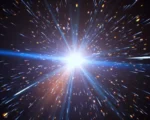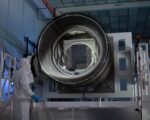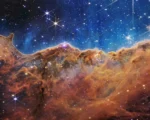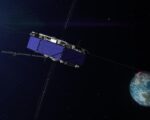Massive Black Holes in the Early Universe Challenge Existing Theories
Astronomers using the James Webb Space Telescope (JWST) have discovered supermassive black holes in the early universe that are far larger than expected. These black holes appear to hold nearly 10 percent of their host galaxy’s stellar mass—an astonishing contrast to the 0.01 percent ratio observed in modern galaxies. This unexpected finding raises new questions about how black holes could have grown so rapidly in the universe’s infancy, challenging current models of galaxy and black hole co-evolution.
New Insights from JWST Observations
A research team led by Jorryt Matthee from the Institute of Science and Technology Austria (ISTA) analyzed JWST data, with their findings published on the preprint server arXiv. The study focused on early galaxies, informally named “little red dot” galaxies, which appear to host supermassive black holes with masses nearly 1,000 times greater than previously estimated. These galaxies, observed as they existed around 1.5 billion years after the Big Bang, exhibit an unusual balance between stellar mass and black hole mass. The results challenge existing models that predict a slower growth rate for black holes relative to their host galaxies.
Possible Explanations for Rapid Growth
Researchers speculate that an abundant supply of gas in the early universe could have fueled this accelerated black hole growth. The red hue of these small galaxies suggests the presence of accretion disks—regions of swirling hot gas spiraling into the black hole—indicating intense matter consumption. The study proposes that early black holes may have gained mass at rates previously thought to be impossible, potentially redefining our understanding of black hole formation and growth in the first few billion years of the universe.
Implications for Cosmology and Future Research
These findings open up new avenues for investigating the early universe, particularly the relationship between black holes and galaxy formation. If these results are confirmed by further JWST observations, astronomers may need to revise their theories on the initial growth phases of supermassive black holes. As JWST continues to peer deeper into cosmic history, scientists hope to uncover more clues about how these colossal objects formed and influenced the evolution of their host galaxies.

















